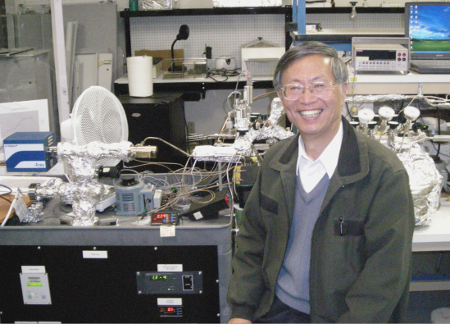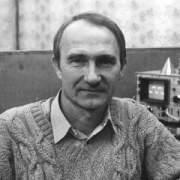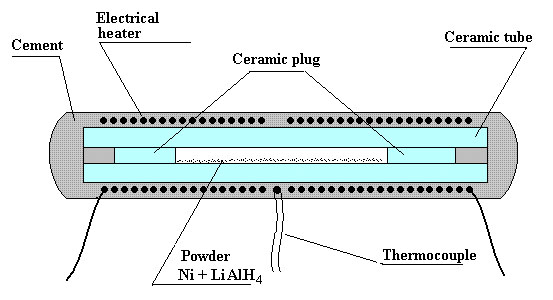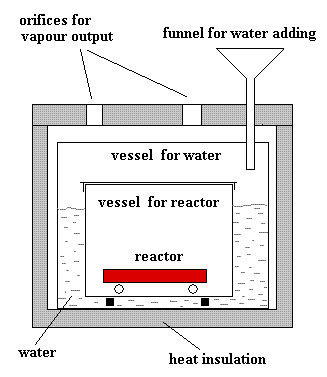
Second Hot Cat Begins To Howl
A Russian scientist has reported on his success at reproducing the Rossi HOT CAT
Dr. Alexander Parkhomov reports on his success in fully independently replicating the Hot Cat experimental set-up as reported in Rossi’s recent Lugano paper Observation of abundant heat production from a reactor device and of isotopic changes in the fuel authored by a group of Italian and Swedish scientists testing Rossi’s technology.
Parkhomov writes of his knock off design saying that “the reactor is capable of generating a lot of heat in excess of electric heating”. With his E-Cat replica testing at temperatures between 1200°C-1300°C, the device provided a COP of about 2.6. That’s 2.6 times more heat than expected.
Works with common materials… no nano
Most notable in his replication was his use of commonly available nickel powder, not some more mysterious or exotic nano-powder. Parkhomov provided a grain analysis of his nickel powder showing it is mostly composed of powder particles of about 12 microns in diameter. This appears to be a very standard metal powder as is available everywhere. It is a far cry, 1000 times larger, than the <30 nano-meter powders some, even many, have speculated might be required to achieve the cold fusion effect. (Experiment always trumps theory.) Parkhomov added 10% Li Al hydride to make his Nickel fuel mix.
‘Heat after death’
This new report importantly shows a ‘heat-after-death’ effect similar to what Pons & Fleischmann first reported decades ago, whereby after the heating (power) input is turned off, the cold fusion reactor continues to maintain its temperature of nearly 800° C for 8 minutes. The cooling curve for the Parkhomov cell, when it really shuts down, to return to ambient looks to be less than a minute. In the F&P boiling cells this free energy heating went on for many hours far more than the few minutes of Parkhomov.
In Parkhomov’s experiment this prolonged ‘heat after death’ lasts for approx. 8 minutes.
Immediately anyone skilled in the art would assume this sustained ‘Hot Cat’ cold fusion allows for engineering improvements including a duty cycle power regime putting banks of cells together that will multiply, likely by many fold, the effective heat producing efficiency. Since Parkhomov is already reporting a more than doubling of heat output compared to electrical input (2.6 times), it’s likely going to be incredibly simple to impose a duty cycle regime that increases the output 10 -100 fold. Replacing the hydrogen with deuterium is another obvious step. Such developments will be revolutionary in the world of energy.
Imagine your home heating bill or car fill-up cost being reduced to just 1% of what it is today! In oil/energy equivalent terms cold fusion energy has a price ‘per barrel of oil/energy’ of just 60 cents instead of todays oil at $60 dollars (and dropping fast)!
Parkamov monitored his experiment for radiation and observed nothing above background.
In reviewing the work of Prof. Parkhomov it’s clear that he is a careful, methodical and skilled experimentalist. He surely seems to understand that in bench science ‘the devil is in the details’, it’s a rare trait these days.
The English-version of Parkhomov’s report is reproduced below:
BEGIN REPORT (Translated by the author)
1. The design of the reactor.
For the manufacture of reactor Al2O3 ceramics tube length of 120 mm, an outer diameter of 10 mm and an inner diameter of 5 mm is used. The tube is rounded by electric heater. Inside the tube it is 1 g Powder Ni + 10% Li [Al H4]. The thermocouple contacts to outer surface of the tube. The ends of the tube are sealed heat-resistant cement. Likewise the entire surface of the reactor is coated by heat-resistant cement.
Used by experts at verification Rossi reactor technique based on thermovision camera observation is too complex. In this experiment a methodology based on the amount of water boiled out is used. This technique is repeatedly checked. In this experiment the reactor is inside of closed metal vessel. This vessel immersed in the water. When the water boils, part of it is removed as a vapor. By measuring the decrease of water, it is easy to calculate the separated heat because the value of the evaporations heat is well-known. Correction for heat loss through the insulation can be calculated as cooling rate after shutdown reactor.
2. Outcomes of the experiment
The power supplied to the heater stepwise varied from 25 to 500 watts. Level of 1000°C was overcome after 5 hours of heating. On the same diagram shows the count rate Geiger counter SI-8B. This counter responsive to alpha, beta, gamma and X-rays. It is seen that all during heating, the radiation situation is not very different from the background. A slight increase in temperature is noticeable only about 600°C to 1000°C. Further studies have shown that this chance or regularity. Dosimeter DK-02 is not found during the experiment set dose within the measurement error (5 mP)
Here is shown in more detail the temperature change of the heating power 300, 400 and 500 watts. It can be noted that for the same heat output there is a gradual increase in temperature, particularly strong in the last site. At the end of the site with the highest temperature there are the temperature oscillations. This section ends with the termination of electric heating as a result of heater burnout. Thereafter, at the temperature for 8 minutes kept at nearly 1,200°C, and then begins to fall sharply. It is indicates that in the reactor at this time heat is produced at kilowatt without any electric heating. Thus, from the already seen that the reactor is capable of generating a lot of heat in excess of electric heating.

Parkhomov data plot — note the lost electrical power (blue line drop) and the continued heating effect (red line) indicating a large amount of heat being produced after the electrical power has stopped! WOW…8 minutes of nearly white hot with no electrical input!
At temperatures 1150°С and 1200°C – 1300°C, the heat release of the reactor considerably exceeds consumed energy. During activity in these modes (90 minutes) over the consumed electrical energy about 3 МДж or 830 Wh is produced. Output Experiments with analogue of high-temperature Rossi heat source, loaded with a mixture of nickel and lithium aluminum hydride, showed that at temperatures of about 1100°C or higher this device produce more energy than it consumes.
End of Parkhomov’s first report
Important Update March 2015: Dr. Parkhomov has given a presentation in Moscow to scientific peers. This presentation shows dramatic progress in his work and precise details of the cold fusion heat being produced. He notes that his the experiments being reported on run for days on end and produce more than 2 times the heat output as can be accounted for from the electrical energy input! The device he uses puts out the same amount of heat as is required by an 1kw heating element but once running consumes only 300 watts to do so.
Here’s a link to read the pdf of his presentation slides. Parkhomov Mar2015
Will there be a rush of simple ‘Hot Cat’ replications?
As the winter wanes and spring arrives we expect to hear caterwauling from a lot of ‘cats’ hot and cold.

Dr. Li visiting from Bejing sitting beside my personally crafted helium spec in my lab near San Francisco a few years back. Behind Dr. Li is my ‘six pack’ of ‘hot cats’ testing metal powders heated under hydrogen and deuterium… Alas we did not heat our ‘cats’ them nearly as hot as Rossi and Parkhomov but will do so now. Dr. Li was/is one of China’s top nuclear scientists.
I cannot resist, I now have my own planned ‘cat’ experiments lining up on the fence with the other ‘hot cats.’ I will attach my helium mass spec to these similar devices and the check their fiery breath in real time for anomalies in hydrogen and helium isotopes. Naturally I’ll do basic calorimetry as well. In past work my mass spec was able to reliably ‘see’ as few as e9 atoms of 4He from my own ‘hot cats’ … well more like ‘warm cats.’
I’ve observed as many as e16 atoms of 4He from some long running cold fusion experiments. Keep in mind that e9 atoms of 4He is about 1/1000th of what is produced by 1 joule of cold DD fusion in one second, a very sensitive instrument. A ‘Hot Cat’ as reported by Rossi might have been expected to convert something like e20 atoms of hydrogen into helium, a tiny yield of helium for you and I but a stunning amount for the mass spec.
Here’s a link to a paper from one of Japan’s most famous physicists on just why we expect to see helium in abundance. Ikegami on chemofusion.
This is in fact what I proposed to Rossi a couple of years ago when I offered to transport (at my expense) my mass spec to his lab in Italy and leave it with him on loan to help in understanding his work. He graciously declined saying that I must understand that he and I were competitors and thus could not collaborate in such a fashion. Patience is a bitch but eventually things do work out.
Clearly if Parkhomov is correct then these experiments are incredibly simple and worthy of using far more definitive diagnostic tools. Meow…
Cold fusion is easier to understand within a ‘cat or tomcat’ metaphor. Some cats get along well together like Dr. Li and I, and some are a bit more stand-offish like Rossi. Here’s a video that helps explain some of the difficulties with ‘cats’ and ‘cold fusioneers’.
Thanks to H. Ross P. for the vid.







